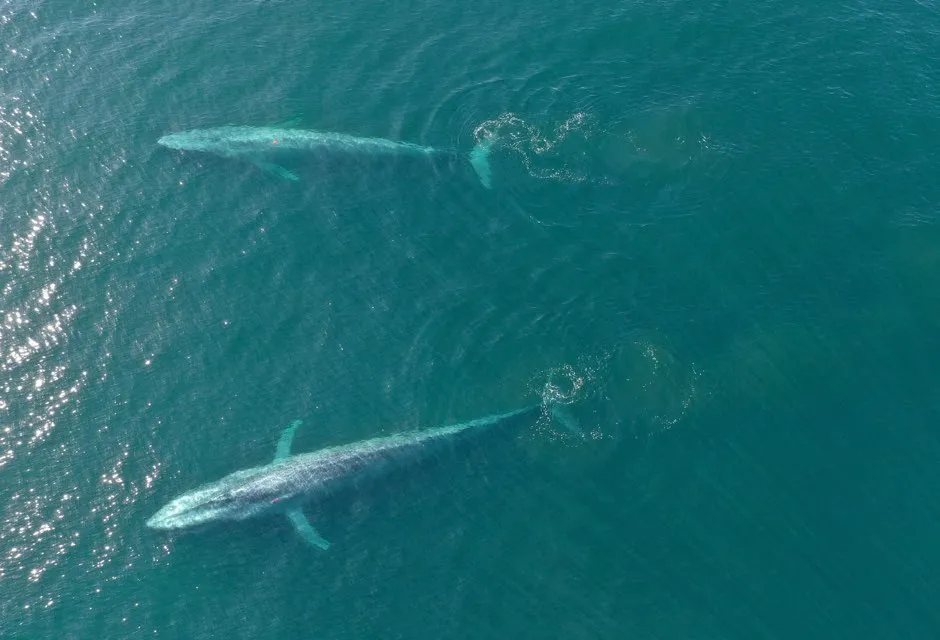Some whales are huge, giant even, and are the largest creatures to have evolved on the planet.
But there is a limit to their size and scientists say they have figured out why the sea-dwelling mammals are not bigger.
Whales’ large bodies help them consume their prey at high efficiencies, a more than decade-long study of around 300 tagged whales shows.
But their gigantism is limited by prey availability and foraging efficiency, according to a study published in the journal Science.
Because the animals spend most of their time under the ocean surface, their behaviour is difficult to monitor.
An international team of scientists, led by Stanford University biologist Jeremy Goldbogen along with Nicholas Pyenson, curator of fossil marine mammals at the Smithsonian’s National Museum of Natural History, collected data from feeding whales.
Their findings reveal that body size in all whales is limited by the availability of their prey.
Researchers also found that only filter-feeding whales have evolved a feeding strategy that rewards and drives them to achieve the largest body sizes to have ever evolved on Earth.
Read more about whales:
- Beluga whales and narwhals go through menopause
- Whales and dolphins: Why are more of them beaching around the UK?
- Blue whales' heart rate can drop to just 2 beats per minute
Dr Goldbogen said: “The ratio of energy gain relative to energy use reveals a whale’s foraging efficiency and that provides clues as to why different whales are big and why they aren’t bigger.”
The team of more than two dozen scientists sought and tagged whales, porpoises and dolphins of various sizes – from 1.5m-long harbour porpoises to blue whales which can grow up to 100 metres long and weigh more than 100 tons.
They used long poles to attach temporary multi-sensor tags on to the animals backs with suction cups.
Once in place, the high-tech devices reported on the animals’ movements as they submerged to feed.

Using sonar devices in the surrounding waters and past records of prey in whale stomachs, the scientists also estimated the density of prey in each tagged predator’s vicinity.
Researchers analysed data from more than 10,000 feeding events in waters from Greenland to Antarctica.
They then used that data to calculate the energetic costs, benefits and total pay-off of foraging for each whale.
Reader Q&A: How long is the largest animal intestine?
Asked by: Harry Burke, Leominster
It’s a fairly close contest between the sperm whale and the blue whale. For most whale and dolphin species, the length of their intestines works out as: (body length/1.762) x 17.02. That comes to more than 150m of intestine in the case of a large sperm whale and possibly as much as 220m for a blue whale.
While this sounds enormous, it’s actually only seven or eight times the whale’s body length. In contrast, a cow has intestines that are 20 times as long as its body – that’s 40m for a 2m-long cow!
Read more:
The scientists report that the relationship between body size and energetic pay-off depended on what feeding strategy a whale had evolved to use.
This meant whether it was a filter feeder that gulps down schools of prey and strains them from ocean water in their mouth, or a toothed hunter that catches prey individually.
Blue whales, humpbacks and other filter-feeding whales use baleen – rows of flexible hair-like plates in their mouths – to strain krill and other small prey from ocean water.
For filter-feeding whales, large size is no impediment to foraging.
Toothed whales use echolocation to forage and are limited to feeding on one prey target at a time, and must dive deeper to find it.
In some cases, the largest toothed whales did not eat enough food during a dive to make up for the energy they spent getting there.
“They literally can’t eat enough to achieve a higher energetic pay-off before they have to return to the surface and breathe,” Dr Pyenson said.

Filter-feeding whales feed on small but very abundant krill prey.
As a result, the researchers suggest the seasonal availability of their abundant prey is what ultimately limits size in today’s filter-feeding ocean giants like fin whales and blue whales.
Dr Goldbogen said: “The largest baleen whale species must reap the energy gains of krill patches in only a few of the most productive summer months at high latitudes.
“Highly efficient filter-feeding strategies mean that these whales can build up fat stores that can then power their migrations across ocean basins to breeding grounds at lower latitudes that are leaner and provide much less food.”

